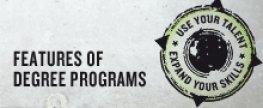
Apply
now
now
Cultural Management III
level of course unit
first cycle, BachelorLearning outcomes of course unit
After completion of the course, students can
• Describe cultural experiences as an interaction of individual experience and
of social standardization;
• Classify cultural opportunities in terms of target groups and experience milieus;
• Critically evaluate esthetic norms such as the distinction between high and popular culture;
• Present best practice examples of cultural mediation in various cultural sectors;
• Describe central positions of audience development;
• Formulate criteria for the mediation and marketing of cultural offers to different target groups.
• Describe cultural experiences as an interaction of individual experience and
of social standardization;
• Classify cultural opportunities in terms of target groups and experience milieus;
• Critically evaluate esthetic norms such as the distinction between high and popular culture;
• Present best practice examples of cultural mediation in various cultural sectors;
• Describe central positions of audience development;
• Formulate criteria for the mediation and marketing of cultural offers to different target groups.
prerequisites and co-requisites
not applicable
course contents
Digital products offered by the media industry represent a central competitor to local cultural offerings and raise the question of what role highly cultural sectors such as publicly financed theatres and museums play in the experience society. Digitization expands the reception space of cultural offerings and changes user behavior and cultural experience. Who participates in culture in what way and which cultural concepts are empirically relevant thus become the decisive research question for contemporary cultural management. The course provides an overview of the central findings of empirical audience and reception research and introduces experiential milieus, media contexts and visitor types in the cultural field. It introduces the fundamentals of cultural mediation and illustrates them with examples from various branches of the cultural industry (music, theater, exhibitions, gardens, film/TV). Various approaches to the cultural audience, such as cultural education, intercultural cultural work and audience development are discussed and the potential of participation and co-creation for the production of cultural experiences is demonstrated.
recommended or required reading
Glogner-Pilz, P. & Föhl, P. S. (Hrsg.). (2016). Handbuch Kulturpublikum. Forschungsfragen und -befunde. Wiesbaden: Springer VS.
Jenkins, H., et al. (2009). Confronting the Challenges of Participatory Culture. Media Education for the 21st Century. Cambridge/London: The MIT Press.
Hausmann, A. & Frenzel, L. (Hrsg.). (2014). Kulturvermittlung 2.0. Neue Medien und ihre Potenziale. Wiesbaden: Springer VS.
Mandel, B. (2016).Teilhabeorientierte Kulturvermittlung, Diskurse und Konzepte für eine Neuausrichtung des öffentlich geförderten Kulturlebens. Bielefeld: transcript.
Packer, J. & Ballantyne, R. (2016). Conceptualizing the Visitor Experience, A Review of Literature and Development of a Multifaceted Model. Visitor Studies, 19(2), 128-143.
Renz, T. (2016). Nicht-Besucherforschung: Die Förderung kultureller Teilhabe durch Audience Development. Bielefeld: transcript.
Roppola, T. (2012). Designing for the Museum Visitor Experience. New York/Oxon: Routledge.
Wünsch, C. et al. (Hrsg.) (2014). Handbuch Medienrezeption. Baden-Baden: Nomos.
Jenkins, H., et al. (2009). Confronting the Challenges of Participatory Culture. Media Education for the 21st Century. Cambridge/London: The MIT Press.
Hausmann, A. & Frenzel, L. (Hrsg.). (2014). Kulturvermittlung 2.0. Neue Medien und ihre Potenziale. Wiesbaden: Springer VS.
Mandel, B. (2016).Teilhabeorientierte Kulturvermittlung, Diskurse und Konzepte für eine Neuausrichtung des öffentlich geförderten Kulturlebens. Bielefeld: transcript.
Packer, J. & Ballantyne, R. (2016). Conceptualizing the Visitor Experience, A Review of Literature and Development of a Multifaceted Model. Visitor Studies, 19(2), 128-143.
Renz, T. (2016). Nicht-Besucherforschung: Die Förderung kultureller Teilhabe durch Audience Development. Bielefeld: transcript.
Roppola, T. (2012). Designing for the Museum Visitor Experience. New York/Oxon: Routledge.
Wünsch, C. et al. (Hrsg.) (2014). Handbuch Medienrezeption. Baden-Baden: Nomos.
assessment methods and criteria
written exam
language of instruction
Germannumber of ECTS credits allocated
3eLearning quota in percent
33course-hours-per-week (chw)
2planned learning activities and teaching methods
integrated course, case studies, discussion, group work, presentations









